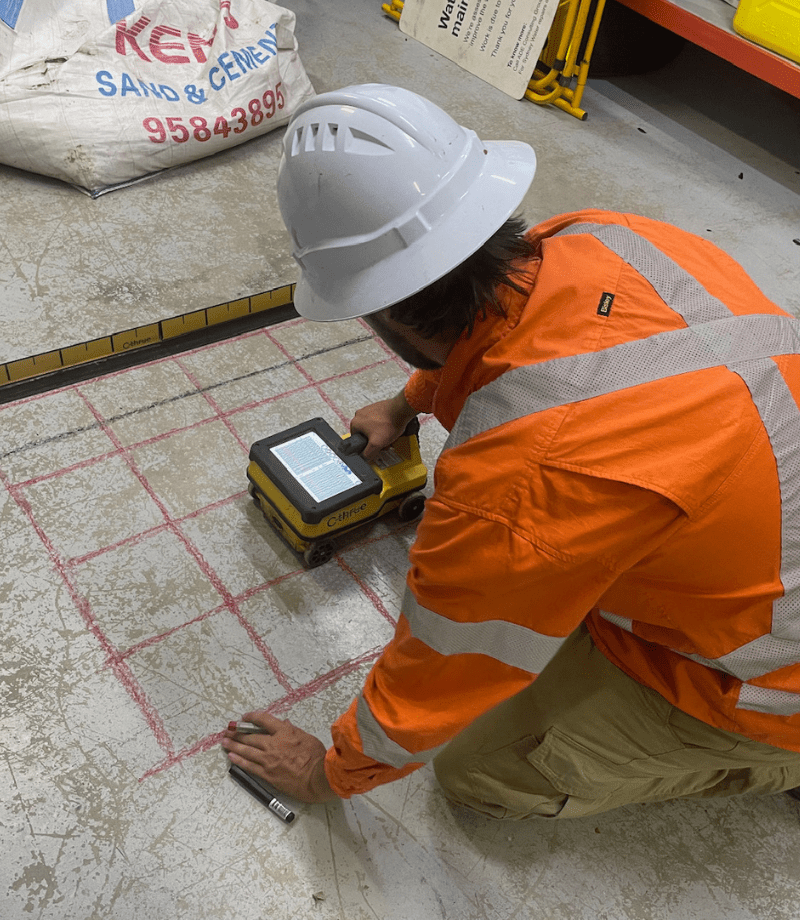Introduce the Transformative Power of Concrete Scanning in Making Best Use Of Efficiency and Safety And Security
Concrete scanning has actually arised as a vital tool in the construction sector, using unmatched advantages in boosting task performance and making sure security requirements. The transformative power of concrete scanning exists in its capability to provide comprehensive understandings and real-time information, revolutionizing how projects are prepared and implemented.
Importance of Concrete Scanning
Guaranteeing the architectural stability and safety of construction tasks starts with the crucial action of conducting comprehensive concrete scanning. Concrete scanning is a non-destructive technique utilized to discover and map subsurface components within concrete frameworks.
The value of concrete scanning can not be overemphasized, as it plays an important duty in protecting against accidents, minimizing job delays, and making certain the long-lasting durability of the construction. By identifying potential hazards before the building stage begins, home builders can execute proper safety and security steps and make notified choices pertaining to the layout and implementation of the task. Additionally, concrete scanning aids in maximizing task timelines and spending plan by avoiding unforeseen expenses and hold-ups that may develop because of unanticipated blockages within the concrete. Eventually, investing in extensive concrete scanning is a positive method that enhances both performance and security in building and construction jobs.
How Concrete Scanning Works
Concrete scanning operates as a vital device in building projects by employing innovative technologies to discover and map subsurface components without triggering architectural damages. Ground Penetrating Radar (GPR) and Electromagnetic Induction (EMI) are 2 key methods utilized in concrete scanning. GPR works by giving off high-frequency radar pulses into the surface area, which recuperate when they experience subsurface things or gaps. The moment considered the signal to return suggests the deepness and location of the objects. EMI, on the other hand, uses electro-magnetic fields to determine variations in material make-ups, such as determining rebar or channels within concrete structures.
Throughout the scanning procedure, the data collected is analyzed in real-time, allowing immediate recognition of prospective threats or barriers below the surface area. By utilizing these innovative technologies, concrete scanning dramatically minimizes the danger of costly damages and injuries on building and construction websites.
Advantages of Concrete Scanning
One of the primary advantages of concrete scanning is the ability to spot and locate ingrained objects such as rebar, post-tension cords, and avenues precisely. Concrete scanning assists in planning and designing a lot more efficiently, as it gives precise info concerning the location and deepness of structural elements.

Situation Researches: Concrete Scanning Success

In one more instance, a building business made use of 3D concrete scanning to examine the condition of aging concrete frameworks in a historical building. The detailed scans provided beneficial insights into the level of damage and helped focus on upkeep efforts effectively. By proactively addressing areas of worry determined through scanning, the business was able to prolong the life expectancy of the framework and make sure owner safety and security.
These study emphasize the transformative power of concrete scanning in boosting effectiveness, precision, and safety in construction projects.
Carrying Out Concrete Scanning in Projects
Carrying out innovative scanning technologies during building projects has come to be significantly essential for boosting accuracy and safety and security. By integrating concrete scanning right into task preparation and execution, building and construction groups can identify possible dangers, such as rebar or post-tension cable televisions, hidden within concrete structures. This positive method minimizes the threat of crashes, hold-ups, and pricey rework, eventually causing much more effective job timelines and budget plans.
To apply concrete scanning effectively, task supervisors need view website to team up carefully with knowledgeable scanning specialists to establish one of the most ideal scanning strategies for the certain job demands. Involving scanning experts from the very early phases of a task allows the team to develop thorough scanning strategies that address crucial locations of problem and ensure detailed data collection.
Moreover, including concrete scanning right into normal task operations can enhance decision-making procedures, as real-time check data offers instant insights into the condition of concrete structures - Concrete Scanning. This data-driven strategy facilitates educated problem-solving and allows groups to make modifications promptly, promoting a culture of effectiveness and security throughout the job lifecycle

Final Thought
Finally, concrete scanning plays a vital role in boosting efficiency and safety in construction jobs. By making use of advanced technology to detect and map out underlying structures within concrete, this procedure aids to protect against costly errors, make sure architectural stability, and reduce dangers on website. With the capacity to discover hidden components and give exact data, concrete scanning proves to be a useful tool for maximizing task my website outcomes and maximizing total success.
Concrete scanning is a non-destructive approach utilized to discover and map subsurface elements within concrete structures. In addition, concrete scanning assists in optimizing project timelines and budget plan by staying clear of unexpected prices and delays that may arise due to unforeseen obstructions within the concrete. One noteworthy case research includes a large restoration task where concrete scanning played a vital role in making certain job success.In one more instance, a building firm utilized 3D concrete scanning to evaluate the problem of maturing concrete structures in a historic structure. By integrating concrete scanning right into job planning click here for more and execution, building teams can determine possible hazards, such as rebar or post-tension cords, concealed within concrete structures.